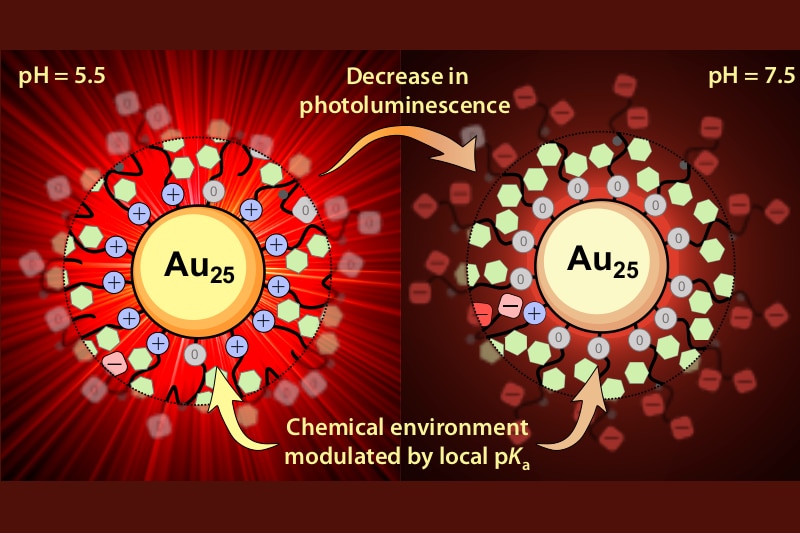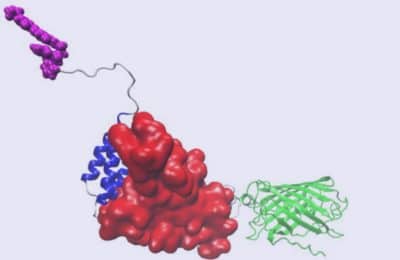Gold nanoclusters coated with peptide ligands are a promising class of bioresponsive materials that can find application in nanocatalysis and in nanomedicine – as for example in drug delivery, chemotherapy, phototherapy, and radiotherapy. The peptide ligands modulate the biochemical and biophysical properties of the metal cluster, and these properties affect in turn the possible functions, and therefore applications, of the gold nanoclusters. Yet, it is often non trivial to understand how to tune these physicochemical properties.
Now a team of scientists presents a theoretical insight into the effect peptide-ligand environment has on a specific type of fluorescence of such particles, with the aim of enhancing the rational design of gold nanoclusters for bioapplications. Results are reported in the article Origins of the pH-Responsive Photoluminescence of Peptide-Functionalized Au Nanoclusters published in the journal ACS Nano.
Stefano Corni from University of Padua and Cnr Nano, Laura Zanetti-Polzi from Cnr Nano in collaboration with Patrick Charchar and Irene Yarovsky from RMIT University focussed on peptide-coated gold nanoclusters that can emit light by fluorescence. Experiments show that, for some peptide, such fluorescence may be switched on and off by changing the solution pH, but the underlying mechanism was not understood. “We selected from a library of experimentally investigated peptide-functionalized gold nanoclusters three specific systems that have different fluorescence change upon changing the solution pH”, explains Laura Zanetti Polzi. “Using theoretical/computational methods we investigated these peptides and explain the origin of the experimentally observed behavior”.
Researchers used mixed quantum/classical simulations techniques (Molecular Dynamics−Perturbed Matrix Method) to simulate the behavior of the peptide-coated gold nanoclusters. As Stefano Corni explains: “We show that the photoluminescent properties of the gold nanoclusters are affected by the solution pH in a non trivial and unexpected way, based on the cooperative protonation/deprotonation equilibria of multiple ionizable groups as well as on subtle changes in the environment electrostatics”. These results thus contribute to the understanding of how to use external stimuli, such as pH change, to control particular properties of the nanoclusters.
Laura Zanetti-Polzi, Patrick Charchar, Irene Yarovsky, and Stefano Corni Origins of the pH-Responsive Photoluminescence of Peptide-Functionalized Au Nanoclusters, ACS Nano Article ASAP, DOI: 10.1021/acsnano.2c04335



